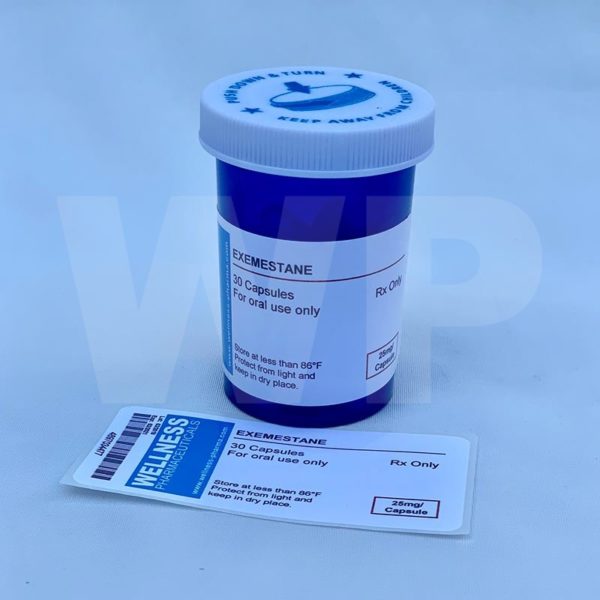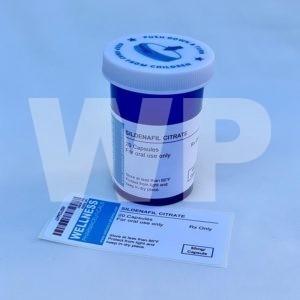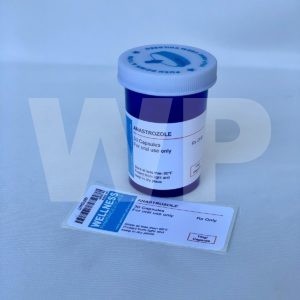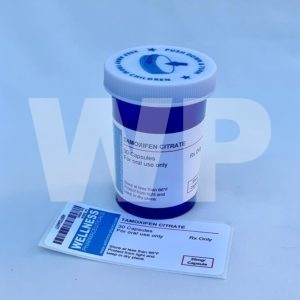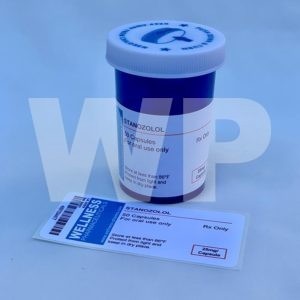Description
PRODUCT DETAILS: For oral use only
PRODUCT SPECIFICATIONS: Exemestane is a synthetic androgen analogue. It’s
is a steroidal inhibitor of aromatase which binds irreversibly to and inhibits the
enzyme aromatase, thereby blocking the conversion of cholesterol to pregnenolone
and the peripheral aromatization of androgenic precursors into estrogens.
Exemestane has been associated with a low rate of serum enzyme elevations
during therapy and rare instances of clinically apparent liver injury.
This medication is used to treat certain types of breast cancer (such as hormonereceptor-positive breast cancer) in women after menopause. Exemestane is also
used to help prevent the cancer from returning. Some breast cancers are made
to grow faster by a natural hormone called estrogen. Exemestane decreases the
amount of estrogen the body makes and helps to slow or reverse the growth of
these breast cancers. Exemestane is usually not used in women of childbearing
age.
Exemestane is usually taken once a day after a meal. Take Exemestane at
around the same time every day. You may need to take Exemestane for several
years or longer. Continue to take Exemestane even if you feel well. Do not stop
taking Exemestane without talking to your doctor.
Effect On Estrogens:
Plasma estrogen (estradiol, estrone, and estrone sulfate) suppression is seen
starting at a 5-mg daily dose of Exemestane, with a maximum suppression of at
least 85% to 95% achieved at a 25-mg dose. Exemestane 25 mg daily reduces
whole body aromatization (as measured by injecting radiolabeled
androstenedione) by 98% in postmenopausal women with breast cancer. After a
single dose of Exemestane 25 mg, the maximal suppression of circulating
estrogens occurres 2 to 3 days after dosing and persisted for 4 to 5 days.
Effect On Corticosteroids:
In multiple-dose trials of doses up to 200 mg daily, Exemestane selectivity was
assessed by examining its effect on adrenal steroids. Exemestane did not affect
cortisol or aldosterone secretion at baseline or in response to ACTH at any dose.
Thus, no glucocorticoid or mineralocorticoid replacement therapy is necessary
with Exemestane treatment.
Other Endocrine Effects:
Exemestane does not bind significantly to steroidal receptors, except for a slight
affinity for the androgen receptor (0.28% relative to dihydrotestosterone). The
binding affinity of its 17dihydrometabolite for the androgen receptor, however, is
100 times that of the parent compound.
Daily doses of Exemestane up to 25 mg had no significant effect on circulating
levels of androstenedione, dehydroepiandrosterone sulfate, or 17-
hydroxyprogesterone, and were associated with small decreases in circulating
levels of testosterone.
Increases in testosterone and androstenedione levels have been observed at
daily doses of 200 mg or more. A dose-dependent decrease in sex hormone
binding globulin (SHBG) has been observed with daily Exemestane doses of 2.5
mg or higher.
Slight, nondose-dependent increases in serum luteinizing hormone (LH) and
follicle-stimulating hormone (FSH) levels have been observed even at low doses
as a consequence of feedback at the pituitary level. Exemestane 25 mg daily had
no significant effect on thyroid function [free triiodothyronine (FT3), free thyroxine
(FT4), and thyroid stimulating hormone (TSH).
Absorption:
Exemestane is distributed extensively into tissues. Exemestane is 90% bound to
plasma proteins and the fraction bound is independent of the total concentration.
Albumin and α11-acid glycoprotein both contribute to the binding. The distribution
of Exemestane and its metabolites into blood cells is negligible.
Metabolism:
Exemestane is extensively metabolized. The initial steps in the metabolism of
Exemestane are oxidation of the methylene group in position 6 and reduction of
the 17-keto group with subsequent formation of many secondary metabolites.
Each metabolite accounts only for a limited amount of drug-related material. The
metabolites are inactive or inhibit aromatase with decreased potency compared
with the parent drug. One metabolite may have androgenic activity [see
Pharmacodynamics]. Studies using human liver preparations indicate that
cytochrome P 450 3A4 (CYP 3A4) is the principal isoenzyme involved in the
oxidation of Exemestane. Exemestane is metabolized also by
aldoketoreductases


